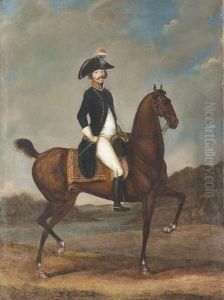Bacler D' Albe Louis Albert Guillain Paintings
Louis Albert-Guillain Bacler d'Albe was a French artist, cartographer, and military officer, most notable for his role as a topographic engineer during the Napoleonic Wars. Born on December 21, 1761, in Saint-Pol-sur-Ternoise, France, Bacler d'Albe began his career in the arts but quickly transitioned to military endeavors where his skills as a draftsman would prove invaluable.
Initially trained in the fine arts, Bacler d'Albe displayed a talent for painting and drawing at a young age. His artistic skills led him to Paris, where he studied under notable artists of the time. However, his life took a significant turn when he became involved in military cartography and topography. This transition was fueled by the French Revolution, which created a demand for skilled cartographers to aid in the reorganization of the country and its military endeavors.
As Napoleon Bonaparte rose to power, Bacler d'Albe's expertise became increasingly important. He joined Napoleon's Italian campaign in 1796 as a topographic engineer and began a close working relationship with the future emperor. His ability to create accurate maps and his innovative techniques in representing topographical information greatly assisted Napoleon's military strategies. Bacler d'Albe's maps were not only practical for military use but were also recognized for their artistic quality.
During his career, Bacler d'Albe accompanied Napoleon on many campaigns, including those in Italy, Egypt, and across Europe. He produced a vast number of maps and topographical sketches that contributed to the success of Napoleon's military campaigns. His relationship with Napoleon grew stronger over the years, and he became one of the emperor's trusted aides, often staying close to Napoleon throughout various battles.
Beyond his military contributions, Bacler d'Albe continued to engage in artistic pursuits. He painted landscapes and battle scenes, some of which depicted key moments in Napoleon's military campaigns. His works were characterized by their attention to detail and their realistic portrayal of military life.
Louis Albert-Guillain Bacler d'Albe died on September 12, 1824, in Sèvres, France. Although primarily remembered for his military cartography, his work as an artist remains noteworthy, capturing the sweeping changes of his era through the lens of both his maps and his canvases. Bacler d'Albe's legacy lies in the unique intersection of art and military science, reflecting the complex and transformative period of the Napoleonic Wars.
